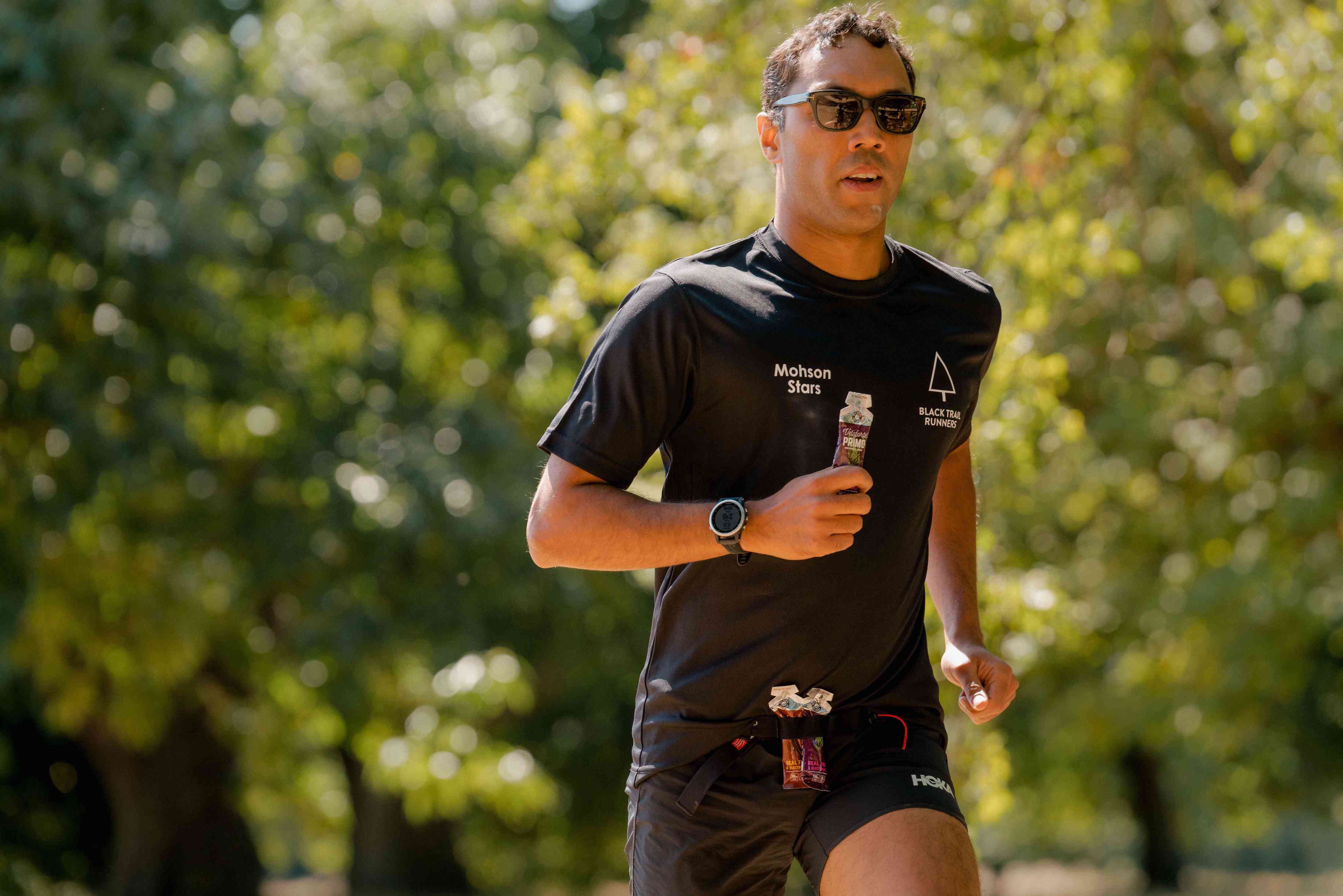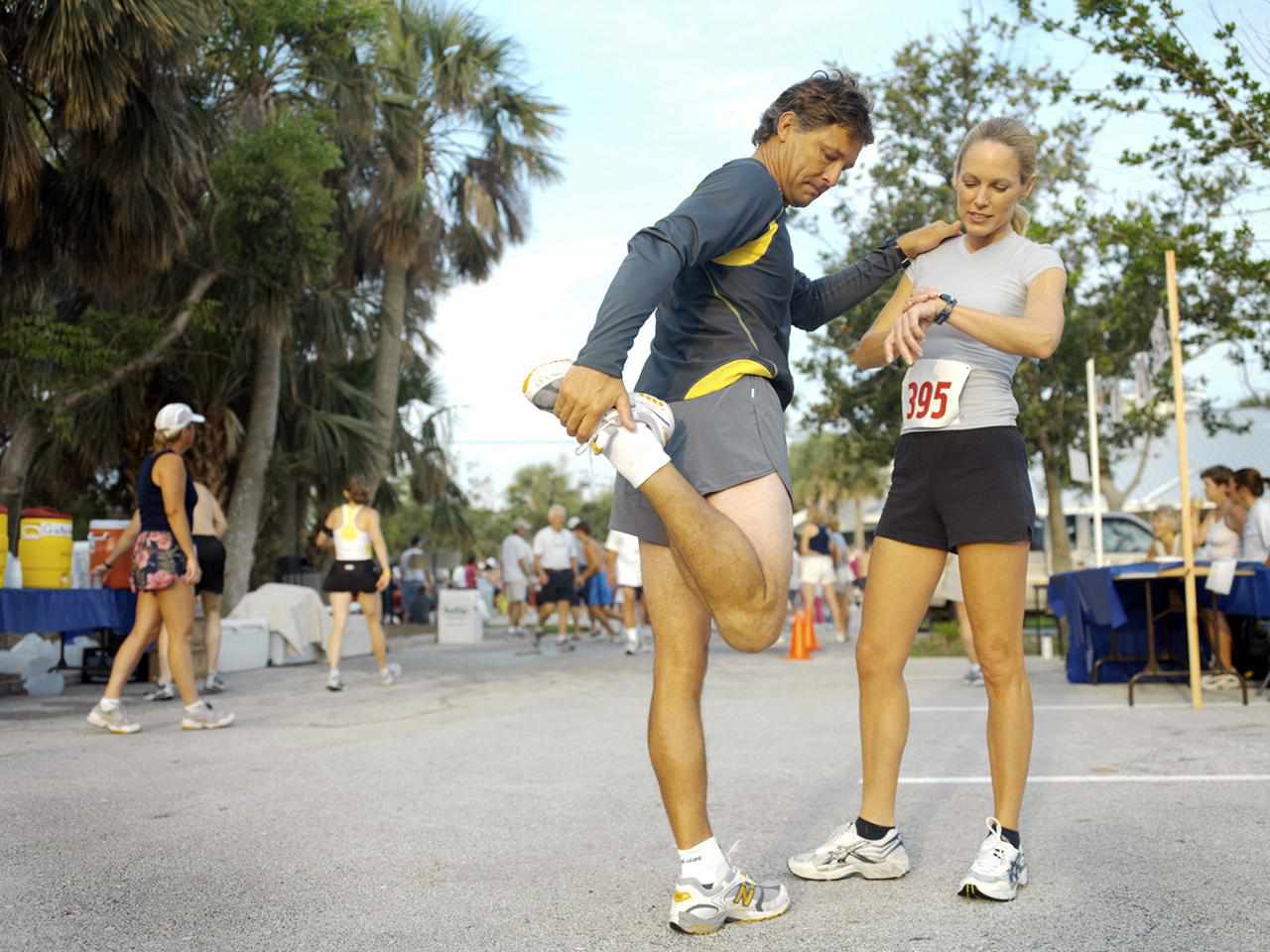

Featured
How To Pace A Half Marathon
Modified: January 22, 2024
Learn how to pace yourself in a half marathon with our featured tips. Improve your race strategy and finish strong!
Introduction
Running a half marathon is an exciting and challenging endeavor. It requires not only physical endurance but also careful planning and strategy. One of the key elements to a successful half marathon is pacing. Pacing refers to the distribution of your effort throughout the race, ensuring that you maintain a consistent speed and energy level.
Proper pacing is crucial for achieving your target time and avoiding the dreaded “wall” – a sudden depletion of energy that can significantly hinder your performance. Whether you’re a seasoned runner or a novice, understanding how to pace a half marathon is essential to maximize your potential and reach the finish line strong.
In this article, we will explore various strategies and tips to help you pace your half marathon effectively. From choosing a target pace to implementing hydration and fueling techniques, we’ll cover everything you need to know to optimize your race performance.
Remember, each runner is unique, and finding the ideal pace for you may require some trial and error. It’s essential to listen to your body, gauge your capabilities, and adjust your pace accordingly. So let’s dive in and discover the art of pacing a half marathon!
Choosing a Target Pace
Before starting your half marathon training, it’s crucial to determine your target pace. Your pace should align with your fitness level, race goals, and overall capabilities. Choosing the right target pace will help you maintain a steady rhythm throughout the race and avoid burnout.
To select a target pace, you can consider the following factors:
- Past Race Performances: Reflect on your previous race times, especially those of similar distances. This can provide a good starting point for determining your target pace.
- Current Fitness Level: Assess your current training status, including your speed, endurance, and recovery capabilities. This will help you set a realistic target pace that challenges you without overwhelming your body.
- Race Goals: Define your goals for the half marathon. Is your primary objective to finish the race, achieve a personal best, or qualify for another event? Your target pace should align with these objectives.
- Course Difficulty: Consider the terrain and elevation changes of the half marathon course. If it’s a hilly route, you may want to adjust your pace accordingly to accommodate the added challenge.
Once you’ve gathered this information, you can use online pace calculators or consult with a running coach to determine your target pace per mile or kilometer. It’s important to note that your target pace should be sustainable over the entire distance of the race.
A common approach to choosing a target pace is the “negative split” strategy. This involves starting the race slightly slower and gradually increasing your speed throughout. It allows you to conserve energy in the early stages and finish strong in the later miles.
Remember, selecting a target pace is not set in stone. As you progress in your training, you may find that you can push yourself a bit harder or need to adjust your pace based on your body’s response. Be flexible and willing to adapt as needed.
Training for a Half Marathon
To successfully pace a half marathon, you need to prepare your body through proper training. Training for a half marathon should include a combination of running, strength training, and cross-training exercises. Here are some essential training tips to help you improve your endurance and pace:
- Build Mileage Gradually: Increase your weekly mileage incrementally to build endurance over time. Aim for a mix of short and long runs, gradually increasing the distance of your long runs to mimic the half marathon distance.
- Incorporate Speed Workouts: Include speed workouts, such as interval training and tempo runs, into your training plan. These workouts help improve your running economy, increase your anaerobic threshold, and enhance your overall running speed.
- Include Strength Training: Incorporate strength training exercises to improve your overall strength and prevent injuries. Focus on exercises that target your lower body, such as squats, lunges, and calf raises.
- Don’t Forget Cross-Training: Engage in low-impact cross-training activities, such as cycling or swimming, to strengthen your cardiovascular system and give your body a break from the impact of running.
- Practice Pacing during Training Runs: During your training runs, practice running at your target pace. This will help you familiarize yourself with the intensity and rhythm, making it easier to maintain during the actual race.
- Listen to Your Body: Pay attention to any signs of overtraining or excessive fatigue. Rest and recovery are just as important as the training itself. Give yourself adequate time to rest and rejuvenate to avoid burnout.
Incorporating a well-rounded training plan that focuses on building endurance, speed, strength, and recovery will prepare your body for the demands of a half marathon. Remember to stay consistent, be patient, and trust the process. Training is a gradual journey, and improvements will come with time.
Warm-up and Pre-Race Preparation
Proper warm-up and pre-race preparation are crucial to set the foundation for a successful half marathon and help you start the race with your desired pace. Here are some important tips to consider:
- Dynamic Stretching: Prioritize dynamic stretching exercises to warm up your muscles and increase your range of motion. Avoid static stretching, as it can hinder performance and increase the risk of injury.
- Warm-up Run: Before the race, go for a short jog or run to raise your heart rate and warm up your muscles. This will help you mentally and physically prepare for the race ahead.
- Mental Preparation: Take some time before the race to mentally visualize yourself achieving your target pace. Visualizing success can boost confidence and enhance focus during the race.
- Pacing Strategies: Review and solidify your pacing strategies based on your training and race goals. Remind yourself of the target pace and how you plan to approach each mile.
- Stay Hydrated: Ensuring proper hydration is important leading up to the race. Drink water consistently in the days leading up to the half marathon to stay hydrated. Avoid excessive caffeine and alcohol, as they can dehydrate your body.
- Carb-loading: Consume a carbohydrate-rich meal the night before the race to top up your glycogen stores. This will provide you with the necessary fuel for the race. Avoid trying new or heavy foods that might upset your stomach.
- Sleep Well: Get a good night’s rest before the race to ensure your body is well-rested and ready to perform at its best. Aim for 7-8 hours of quality sleep.
- Arrive Early: Plan to arrive at the race venue with ample time to check-in, warm up, and mentally prepare. Rushing or feeling rushed can create unnecessary stress and affect your pacing.
By implementing these warm-up and pre-race preparation strategies, you’ll be physically and mentally primed to start the race strong and maintain your target pace.
Pacing Strategies for the First Half
The first half of a half marathon is crucial for setting the tone and establishing a consistent pace. Here are some effective pacing strategies to implement during the initial miles:
- Start Steady: Resist the temptation to start too fast. Begin the race at a slightly slower pace than your target pace to conserve energy and ease into the race. Starting too fast can lead to early fatigue and difficulty maintaining your pace.
- Monitor Your Effort: Pay attention to your breathing and perceived effort level. Aim for a comfortable, controlled pace that allows you to hold a conversation. If you find yourself breathing heavily or struggling, adjust your pace accordingly.
- Follow Your Plan: Stick to your race plan and pacing strategies. Trust the training and pace that you’ve practiced during your training runs. Avoid impulsively speeding up or slowing down in response to other runners around you.
- Use Mile Markers: Utilize the mile markers along the course to assess your progress and adjust your pace if necessary. If you’re slightly ahead of your target pace, consider easing off the gas to avoid burning out later in the race.
- Find a Rhythm: Establish a consistent rhythm and focus on maintaining the same effort level throughout the first half of the race. A steady and controlled pace will help you conserve energy for the more challenging second half.
- Avoid Surges: Refrain from sudden surges or bursts of speed, especially during the early miles. Gradual and consistent pacing is key to a successful half marathon. Save your energy for later in the race when you may need it more.
- Stay Relaxed: Keep your body relaxed and maintain good running form. Tension and tightness can lead to inefficiency and fatigue. Focus on a relaxed posture, rhythmic breathing, and fluid arm movements.
Remember, the first half of the race is about finding your rhythm, settling into your target pace, and conserving energy for the challenges ahead. Stick to your plan, listen to your body, and trust in your training. By executing these pacing strategies in the first half, you’ll set yourself up for a strong finish and achieve your race goals.
Pacing Strategies for the Second Half
As you enter the second half of the half marathon, it’s crucial to reassess your pace and adjust your strategies accordingly. Here are some effective pacing strategies to help you maintain your pace and finish strong:
- Stay Mentally Strong: As fatigue sets in, it’s essential to stay mentally resilient. Focus on positive affirmations, break the remaining distance into manageable chunks, and visualize yourself crossing the finish line with your desired pace.
- Utilize a Slight Negative Split: If you’ve paced yourself well in the first half, you can aim for a slight negative split – gradually increasing your pace in the second half. This can provide a mental and physical boost as you pass other runners.
- Manage Hills: If the course includes hills in the second half, adjust your pace accordingly. Slow down slightly on uphill sections to conserve energy, and then make up for lost time on the downhill stretches.
- Break the Race into Smaller Segments: Mentally divide the remaining distance into smaller segments, such as focusing on specific landmarks or aid stations. This approach can make the race feel more manageable and help you stay focused on maintaining your pace.
- Use Your Supporters: Draw energy from the cheering spectators and use their encouragement to lift your spirits. High-five spectators, smile, and acknowledge their support. Their energy can be contagious and help you maintain your momentum.
- Stay Hydrated and Fuelled: Continue to hydrate at each water station and consume energy gels or other fuel sources as needed. Dehydration and bonking can significantly affect your performance and pace. Listen to your body and replenish accordingly.
- Stay Relaxed and Focused: Keep your form relaxed, maintain good running posture, and focus on your breathing. Avoid tensing up or overthinking your pace. Trust in your training and stay present in the moment.
By implementing these pacing strategies for the second half of the race, you’ll be able to maintain your target pace, conquer any challenges, and finish the half marathon on a strong note. Remember to stay mentally tough, adapt to the course conditions, and maintain proper hydration and fueling to support your pacing efforts.
Mental Strategies for Maintaining Pace
Maintaining a steady pace during a half marathon requires not only physical strength but also mental fortitude. Here are some effective mental strategies to help you stay focused and maintain your pace throughout the race:
- Set Realistic Expectations: Have realistic expectations about your pace and race performance. Setting overly ambitious goals can lead to frustration and disappointment. Focus on achieving a pace that is challenging yet attainable for you.
- Positive Self-Talk: Replace negative thoughts with positive affirmations and self-talk. Remind yourself of your training and the progress you’ve made. Repeat motivational mantras like “I’m strong,” “I can do this,” and “I’m in control of my pace.”
- Break the Race into Smaller Goals: Instead of focusing solely on the overall distance, break the race into smaller milestones. Set pace goals for each mile or kilometer and celebrate reaching each one. This approach makes the race feel more manageable and helps you stay focused.
- Visualize Success: Use visualization techniques to imagine yourself maintaining your pace and crossing the finish line strong. Visualize the feelings of accomplishment, joy, and pride you will experience. This mental imagery can boost confidence and motivation.
- Practice Mindfulness: Stay present in the race and focus on each step and breath. Be aware of your body and tune in to how it feels. This can help you stay in tune with your pace and make necessary adjustments if needed.
- Use External Motivation: Draw inspiration from the energy of the crowd, fellow runners, and inspiring quotes or images. Look for cheering supporters along the course and allow their energy to uplift you and maintain your pace.
- Embrace Discomfort: Acknowledge that running a half marathon is challenging, and there will be moments of discomfort. Embrace the discomfort and understand that it is a sign of growth and pushing your limits. Focus on the satisfaction that comes from persevering.
- Find Your Flow: Discover a rhythm that works for you and helps you maintain your pace. Whether it’s focusing on your breath, syncing your footsteps to a mantra, or listening to a particular song, find what puts you in a focused and calm state.
By implementing these mental strategies, you can stay focused, maintain a positive mindset, and effectively navigate the mental challenges that may arise during the half marathon. Remember that your mental strength is just as important as your physical fitness in maintaining your pace and achieving your race goals.
Hydration and Fueling Tips
Proper hydration and fueling are vital for maintaining your pace and energy levels throughout a half marathon. Here are some essential tips to help you stay hydrated and fueled during the race:
- Hydrate Adequately Before the Race: Drink water consistently in the days leading up to the race to ensure you are well-hydrated. Avoid excessive caffeine and alcohol as they can dehydrate your body.
- Carry a Hydration System: Consider using a hydration belt, handheld bottle, or hydration pack to carry water with you during the race. This allows you to sip water regularly and stay hydrated between aid stations.
- Take Advantage of Aid Stations: Familiarize yourself with the location of aid stations along the course. Take small sips or gulps of water at each station to stay hydrated, but avoid drinking excessively, as it can lead to bloating or discomfort.
- Consume Electrolytes: Along with water, replenish electrolytes lost through sweat by consuming sports drinks or electrolyte gels provided at aid stations. Electrolytes help maintain proper muscle function and prevent cramping.
- Practice Fueling during Training Runs: Experiment with different fueling options, such as energy gels, chews, or bars, during your long training runs. Find what works best for you in terms of taste, digestion, and energy boost.
- Timing is Key: Plan your fueling strategy based on the duration of the race. Start consuming fuel around the 45-minute mark and continue to take small amounts every 30-45 minutes to maintain a steady energy level.
- Avoid Trying Anything New on Race Day: Stick to the fueling routine that has worked for you during training. Avoid trying new foods, gels, or sports drinks on race day to prevent gastrointestinal issues or discomfort.
- Listen to Your Body: Pay attention to your body’s signals and adjust your hydration and fueling as needed. Everyone’s fluid and energy needs are different, so trust your intuition and adapt accordingly.
- Enjoy Post-Race Recovery: After crossing the finish line, replenish your body with a combination of water, electrolytes, and a balanced meal or snack to aid in recovery.
Remember, staying hydrated and fueled throughout the race is essential for maintaining your pace and overall performance. Practice your hydration and fueling strategies during training to ensure they work for you, and make any necessary adjustments to optimize your race day experience.
Common Mistakes to Avoid
When it comes to pacing a half marathon, there are several common mistakes that can hinder your performance and throw off your pace. By being aware of these mistakes, you can avoid them and maintain a consistent and successful race. Here are some common pacing mistakes to watch out for:
- Starting Too Fast: One of the most common mistakes is starting the race at a pace faster than your target. This can lead to early fatigue and difficulty maintaining your pace in the later miles. Stick to your race plan and resist the urge to sprint off at the beginning.
- Ignoring Your Body’s Signals: Failing to listen to your body during the race can be detrimental. If you’re experiencing pain, fatigue, or any other discomfort, it’s important to acknowledge and address it. Pushing through without paying attention to your body’s signals can lead to injury or burnout.
- Not Practicing Pacing Strategies: Pacing is a skill that needs to be practiced during training runs. Neglecting to practice pacing strategies can leave you unsure of how to maintain your pace during the race. Make sure to incorporate pace-specific training into your race preparation.
- Underestimating the Course: Failing to properly assess the course terrain and elevation can negatively impact your pacing. If the course includes hills or challenging sections, you need to adjust your pace accordingly and conserve energy for those parts.
- Overrelying on Technology: While technology such as GPS watches or running apps can be beneficial, solely relying on them for pacing can be risky. Technical glitches or inaccurate measurements can throw off your pace. Use technology as a tool, but also learn to rely on your internal rhythm and instincts.
- Neglecting Hydration and Fueling: Not properly hydrating or fueling during the race can lead to decreased energy levels and difficulty maintaining your pace. Plan and practice your hydration and fueling strategies during training to avoid running out of steam during the race.
- Losing Focus and Mental Resilience: It’s easy to become distracted or mentally fatigued during a half marathon. Maintaining focus and mental resilience is crucial for maintaining your pace. Use visualization techniques, positive self-talk, and stay present in the moment to overcome mental hurdles.
By avoiding these common pacing mistakes, you can set yourself up for a more successful and enjoyable half marathon. Stay disciplined, trust your training, and be mindful of your pacing throughout the race.
Final Thoughts and Tips for a Successful Half Marathon
Congratulations! You’ve learned various strategies and tips for pacing a half marathon. As you prepare for your race, here are some final thoughts and additional tips to ensure a successful and memorable half marathon experience:
- Trust Your Training: You’ve put in the hard work during your training. Trust in the process and believe in your abilities. Have confidence in the training you’ve completed, and know that you’re well-prepared to tackle the half marathon.
- Stay Positive and Enjoy the Journey: Half marathons can be physically and mentally demanding, but it’s important to stay positive throughout the race. Embrace the experience, enjoy the journey, and celebrate the milestones along the way.
- Listen to Your Body: Your body will communicate its needs during the race. Pay attention to any signs of fatigue, dehydration, or injury. Adjust your pace, hydration, and fueling strategies as necessary to keep your body performing at its best.
- Find your Motivation: Remember why you signed up for the half marathon in the first place. Whether it’s achieving a personal goal, supporting a cause, or simply the joy of running, tap into that motivation during challenging moments to push through and maintain your pace.
- Smile and Have Fun: Running a half marathon is an incredible achievement. Remember to smile, have fun, and soak in the experience. The positivity and enjoyment will fuel your motivation to maintain your pace and finish strong.
- Share the Journey: If possible, run with a friend or join a pacing group. Not only will this provide support and encouragement, but it can also provide accountability and help you maintain your desired pace.
- Recover and Reflect: After crossing the finish line, take time to recover and reflect on your race experience. Celebrate your accomplishment and learn from any challenges or mistakes. Use this knowledge to improve your future training and pacing strategies.
Remember, every half marathon is a unique experience. Enjoy the journey, embrace the challenges, and maintain a positive mindset. With proper preparation, pacing strategies, and a determined mindset, you’re well on your way to achieving your half marathon goals. Good luck on race day!









